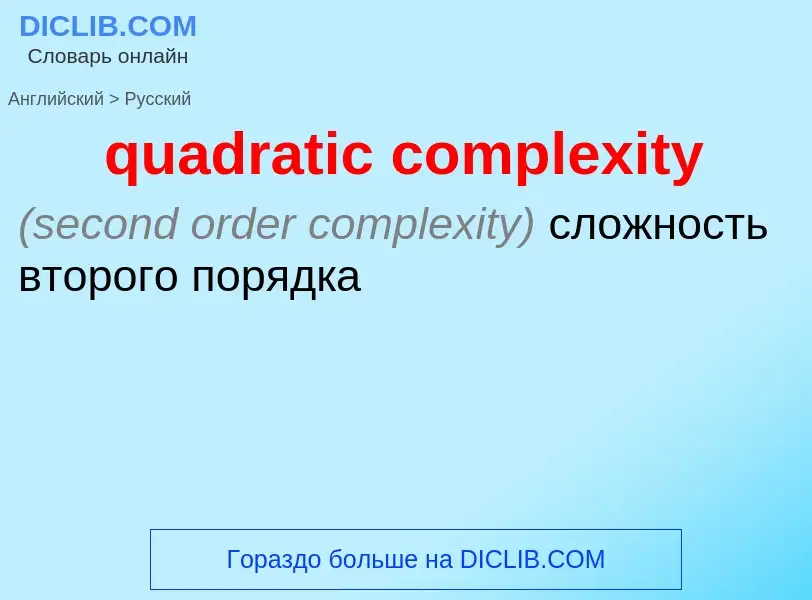Translation and analysis of words by artificial intelligence
On this page you can get a detailed analysis of a word or phrase, produced by the best artificial intelligence technology to date:
- how the word is used
- frequency of use
- it is used more often in oral or written speech
- word translation options
- usage examples (several phrases with translation)
- etymology
quadratic complexity - translation to English
- algorithmic complexity
- arithmetic complexity
- cipher-breaking complexity
- circuit complexity
- combinational complexity
- communication complexity
- computational complexity
- correlation-immunity complexity
- cryptoanalitic complexity
- deterministic complexity
- exponential complexity
- exponential time complexity
- first order complexity
- functional complexity
- information-based complexity
- intractable computational complexity
- Kolmogorov complexity
- linear complexity
- maximal order complexity
- multiplicative complexity
- polynomial complexity
- polynomial time complexity
- quadratic complexity
- second order complexity
- software complexity
- space complexity
- state complexity
- stochastic complexity
- structural complexity
- time complexity
- time-space complexity
- worst-case complexity
- Ziv-Lempel complexity
математика
асимптотическая сложность
Definition
Wikipedia
In mathematics, a quadratic irrational number (also known as a quadratic irrational, a quadratic irrationality or quadratic surd) is an irrational number that is the solution to some quadratic equation with rational coefficients which is irreducible over the rational numbers. Since fractions in the coefficients of a quadratic equation can be cleared by multiplying both sides by their least common denominator, a quadratic irrational is an irrational root of some quadratic equation with integer coefficients. The quadratic irrational numbers, a subset of the complex numbers, are algebraic numbers of degree 2, and can therefore be expressed as
for integers a, b, c, d; with b, c and d non-zero, and with c square-free. When c is positive, we get real quadratic irrational numbers, while a negative c gives complex quadratic irrational numbers which are not real numbers. This defines an injection from the quadratic irrationals to quadruples of integers, so their cardinality is at most countable; since on the other hand every square root of a prime number is a distinct quadratic irrational, and there are countably many prime numbers, they are at least countable; hence the quadratic irrationals are a countable set.
Quadratic irrationals are used in field theory to construct field extensions of the field of rational numbers Q. Given the square-free integer c, the augmentation of Q by quadratic irrationals using √c produces a quadratic field Q(√c). For example, the inverses of elements of Q(√c) are of the same form as the above algebraic numbers:
Quadratic irrationals have useful properties, especially in relation to continued fractions, where we have the result that all real quadratic irrationals, and only real quadratic irrationals, have periodic continued fraction forms. For example
The periodic continued fractions can be placed in one-to-one correspondence with the rational numbers. The correspondence is explicitly provided by Minkowski's question mark function, and an explicit construction is given in that article. It is entirely analogous to the correspondence between rational numbers and strings of binary digits that have an eventually-repeating tail, which is also provided by the question mark function. Such repeating sequences correspond to periodic orbits of the dyadic transformation (for the binary digits) and the Gauss map for continued fractions.


